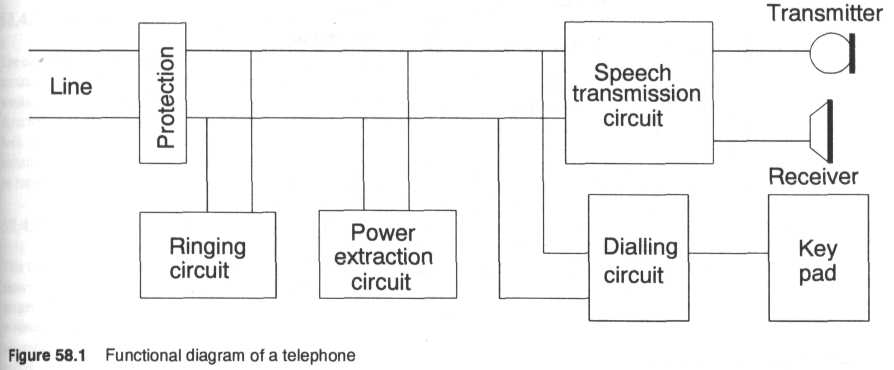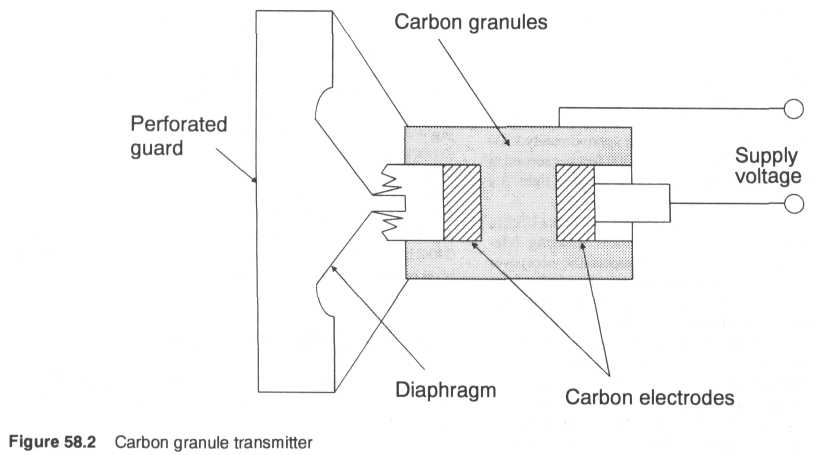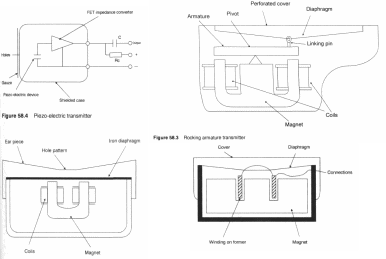
- •Учреждение образования «высший государственный колледж связи» «чтение и перевод технических текстов по специальности ткс»
- •Часть II
- •Unit 3 Time Division Multiplexing
- •21.1 General definition
- •21.2 Digital time division multiplex structure
- •21.2.1 Frame organisation
- •21.2.2 Frame alignment
- •21.2.3 Signalling
- •1 Learn the words & word combinations:
- •4 Answer the questions:
- •21.3 The digital hierarchy levels
- •21.4 The t carrier framing and coding formats
- •The superframe format
- •21.4.2 The extended superframe format
- •21.4.3 Clear channels for data applications
- •1 Learn the words & word combinations:
- •4 Answer the questions:
- •21.5 The cept pcm-30 framing format
- •21.5.1 Frame composition
- •1 Learn the words & word combinations:
- •21.6.2 Error conditions
- •21.7 Coding schemes
- •1 Learn the words & word combinations:
- •4 Answer the questions:
- •Unit 4 (58) Telephones and headsets
- •58.1 Telephones
- •58.2 Telephone speech functions
- •58.3 Telephone transmitters
- •58.3.1 Carbon granule transmitter
- •58.3.2 Rocking armature transmitter
- •58.3.3 Piezoelectric transmitter
- •58.4 Telephone receivers
- •58.4.1 Rocking armature receiver
- •58.4.2 Moving coil receiver
- •1. Learn the words & word combinations:
- •4. Answer the questions:
- •5. Translate in written form point 58.3.1:
- •58.5 Telephone handset design
- •58.6 Telephone transmission performance
- •58.6.1 Sending sensitivity
- •58.6.2 Receive sensitivity
- •58.6.3 Impedance
- •58.6.4 D.C. Characteristics
- •1 Learn the words & word combinations:
- •3 Find English equivalents:
- •Answer the questions:
- •5 Translate in written form points 58.6.1 – 58.6.4:
- •58.7 Signalling
- •Incoming ringing signals
- •Outgoing 48raveling
- •Dial pulse or loop disconnect 49raveling
- •Dual tone multifrequency 50raveling
- •Loudspeaking telephones
- •1 Learn the words & word combinations:
- •4 Answer the questions:
- •5 Translate in written form points 58.9:
- •58.9 Digital telephones
- •58.10 Telephone standards
- •58.11 Headsets
- •58.12 Headset aesthetics
- •58.13 Headset technical considerations
- •58.13.1 Microphones
- •58.13.2 Earphones
- •58.14 The growing need for headsets
- •58.15 Headset approval process
- •58.16 Headset design criteria
- •1 Learn the words & word combinations:
- •Unit 5 (60) Facsimile transmission
- •60.2 Facsimile types
- •60.2.1 Photofax equipment
- •60.2.2 Weatherfax equipment
- •60.2.3 Pagefax equipment
- •60.2.4 Mobile equipment
- •60.2.5 Government and military equipment
- •60.2.5.1 Strategic requirements
- •60.2.5.2 Tactical requirements
- •60.3 Ccitt document facsimile equipment
- •1 Learn the words & word combinations:
- •3 Find English equivalents:
- •4 Answer the questions:
- •5. Translate in written form points 60.3.4:
- •60.4 G3 facsimile equipment
- •60.4.1 Scanner
- •60.4.2 Data compression
- •60.4.2.1 Modified Huffman
- •60.4.2.2 Modified read
- •60.4.3 Modulation and demodulation
- •60.4.3.1 G3 signal transmission
- •60.4.3.2 Modem operation
- •60.4.3.3 14.4Kbills option
- •1 Learn the words & word combinations:
- •2 Find Russian equivalents; mind the meaning of these expressions:
- •60.4.4.1 Ecm receiver operation
- •60.4.4.2 Ecm performance
- •60.4.5 Printer
- •60.4.6 G3 handshake protocol
- •60.5 64Kbit/s facsimile equipment
- •60.5.1 G4 equipment
- •60.5.2 64Kbit/s g3 type equipment
- •1 Learn the words & word combinations:
- •2 Find Russian equivalents; mind the meaning of these expressions:
- •3 Answer the questions:
- •5. Translate in written form points
- •60.6 G3 networks, switches, gateways and pc fax.
- •60.6.1 Managed network use
- •60.6.2 Facsimile switches
- •60.6.3 Facsimile gateways
- •60.6.4 Pc fax cards
- •60.7 Facsimile futures
- •1 Write out all the words unknown to you, learn them properly.
- •2 Translate in written form points 60.6 – 60.7
- •«Чтение и перевод технических текстов по специальности ткс»
- •Часть II
58.2 Telephone speech functions
In speech communications we are primarily concerned with intelligibility i.e. the percentage of voice signals transmitted from one telephone and correctly received at the telephone at the distant end. We do not have to transmit every single part of the sound generated, since the listener acts as an error correction mechanism and can fill in any missing elements and still understand completely what has been transmitted. The prime intelligence in the human voice is contained in quite a small segment of the bandwidth of the hearing/voice spectrum. The human ear can detect sounds from 16Hz to 20000Hz and the human voice can generate sounds from l00Hz to l0000Hz.
Most of the energy in an average male voice is contained within the band from 125Hz to 2000Hz and the average female voice from 400Hz to 2000Hz. CCITT recommend a bandwidth of 300Hz to 3400Hz as being adequate for telephony and provide an acceptable level of intelligibility on a speech connection.
58.3 Telephone transmitters
Telephone transmitters have been designed using numerous techniques to convert sound impinging onto the transmitter into electrical energy.
58.3.1 Carbon granule transmitter
Carbon granule transmitters were very common from the earliest days of telephony until comparatively recently. The principle of operation is shown in Figure 58.2. Sound pressure impinges on the diaphragm causing it to vibrate. The centre of the diaphragm is attached to a carbon electrode which moves, compressing and decompressing the fine carbon granules sealed in the chamber at the rear of the device. A second carbon electrode is fixed to the back wall of the device. The variation in pressure on the fine carbon granules causes the resistance between the two electrodes to vary in unison with movement of the diaphragm. When a d.c. supply is connected between the two carbon electrodes, and the carbon granules are compressed and decompressed, an alternating current is superimposed on the d.c. supply which represents the speech signal.


58.3.2 Rocking armature transmitter
The rocking armature transmitter is shown in Figure 58.3. Sound pressure impinges on the diaphragm causing the armature to pivot, altering the magnetic field and inducing an alternating current in the coils. This alternating current represents the speech signal.
58.3.3 Piezoelectric transmitter
Piezo-electric transmitters work on the principle that certain types of quartz crystals become electrically polarised when subjected to pressure from sound waves. Sound impinges on the disc of piezo material, causing the disc to be stressed, varying the charge on the capacitor within the disc, which in turn varies the gate voltage of the FET impedance conversion amplifier, shown in Figure 58.4. The disc and the FET are all housed in a pressed aluminium casing. The apertures at the front of the transmitter have variable hole patterns which are selected to improve the frequency response of the unit.

